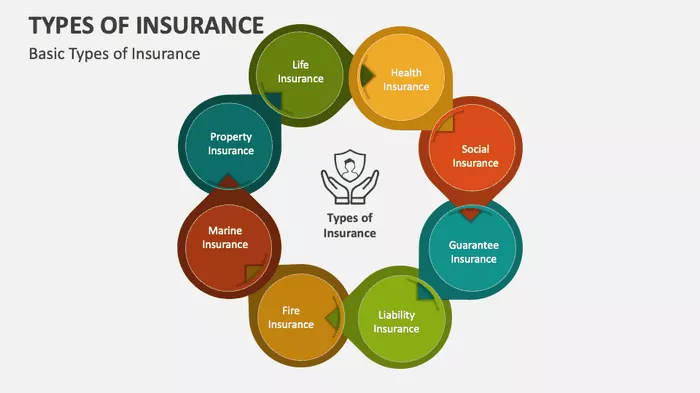Life insurance is a crucial financial product for many individuals and families. It provides financial protection and peace of mind. Understanding the highest life insurance policies can help you make informed decisions about your coverage. This article explores the different types of life insurance policies, the factors that influence coverage amounts, and examples of some of the highest life insurance policies available.
Understanding Life Insurance
Life insurance is a contract between an insurer and a policyholder. The insurer agrees to pay a designated beneficiary a sum of money upon the death of the insured person. In exchange, the policyholder pays regular premiums.
There are two main types of life insurance: term life insurance and permanent life insurance. Each type has distinct features, benefits, and drawbacks.
Term Life Insurance
Term life insurance provides coverage for a specific period, usually ranging from 10 to 30 years. If the insured dies during this term, the beneficiaries receive the death benefit. If the term expires and the policyholder is still alive, the coverage ends, and no benefit is paid out.
Advantages of Term Life Insurance:
- Affordability: Term life insurance typically has lower premiums than permanent policies.
- Simplicity: It is straightforward and easy to understand.
Disadvantages of Term Life Insurance:
- Temporary Coverage: It provides no value if the policyholder outlives the term.
- Renewal Costs: Renewing a term policy can lead to significantly higher premiums.
Permanent Life Insurance
Permanent life insurance provides lifelong coverage. It includes several sub-types, including whole life, universal life, and variable life insurance. Unlike term insurance, permanent policies accumulate cash value over time.
Advantages of Permanent Life Insurance:
- Lifetime Coverage: It remains in force as long as premiums are paid.
- Cash Value: It builds cash value that can be borrowed against or withdrawn.
Disadvantages of Permanent Life Insurance:
- Higher Premiums: Permanent policies usually have higher premiums than term policies.
- Complexity: Understanding the features and benefits can be complicated.
Factors Influencing Life Insurance Coverage Amounts
The amount of life insurance coverage you need depends on several factors. Understanding these can help you determine the highest policy amount suitable for your situation.
1. Financial Obligations
Consider your financial obligations when determining coverage amounts. These may include:
Mortgage Payments: Ensure your beneficiaries can pay off the mortgage.
Children’s Education: Account for future education expenses for your children.
Debt Repayment: Include any outstanding debts, such as credit cards or personal loans.
2. Income Replacement
Life insurance should replace your income if you pass away. Consider the following:
Annual Income: Calculate how many years of income your family would need.
Inflation: Consider potential future income needs, factoring in inflation.
3. Dependents
If you have dependents, their financial needs are a priority. Assess the following:
Spouse: Account for your spouse’s financial needs and lifestyle.
Children: Factor in childcare and support for dependent children.
4. Final Expenses
Life insurance can also cover funeral and burial costs. Consider the following:
Funeral Costs: Average funeral costs can range from $7,000 to $12,000.
Medical Bills: Include any unpaid medical bills that may arise.
5. Other Considerations
Other factors to consider include:
Lifestyle Choices: Risky lifestyles may increase premiums.
Health Status: Pre-existing health conditions can affect eligibility and costs.
See Also: What Is the Biggest Car Insurance Company?
Examples of High Coverage Life Insurance Policies
Several life insurance companies offer high coverage policies. Here are examples of some of the highest life insurance policies available.
1. Haven Life
Haven Life, a subsidiary of MassMutual, offers term life insurance policies with coverage amounts up to $3 million. Their application process is straightforward and can be completed online. Haven Life also provides a unique benefit: the ability to add a chronic illness rider, allowing policyholders to access a portion of the death benefit if diagnosed with a chronic illness.
2. Northwestern Mutual
Northwestern Mutual provides permanent life insurance policies with coverage amounts often exceeding $10 million. Their whole life policies build cash value over time and offer dividends to policyholders. This company is known for its financial strength and strong customer service.
3. State Farm
State Farm offers both term and whole life insurance policies, with maximum coverage amounts reaching up to $10 million. State Farm’s policies are customizable, allowing policyholders to add riders for additional coverage, such as accidental death benefits or disability income.
4. Prudential
Prudential provides a wide range of life insurance products, including term, whole, and universal life insurance. They offer policies with coverage amounts up to $10 million or more, depending on the applicant’s qualifications. Prudential also offers innovative options, such as the PruLife Index Advantage UL, which ties cash value growth to an equity index.
5. Transamerica
Transamerica offers various life insurance options with coverage amounts reaching $10 million. They provide both term and permanent policies, with the ability to add riders for enhanced protection. Transamerica is known for its comprehensive customer service and support.
6. AIG (American International Group)
AIG offers high coverage life insurance policies, including term and permanent options. Their policies can reach coverage amounts of up to $25 million or more, depending on underwriting requirements. AIG is recognized for its flexibility and ability to tailor policies to individual needs.
How to Choose the Right Life Insurance Policy
Selecting the right life insurance policy involves several steps. Here are key considerations to help you make an informed decision.
1. Assess Your Needs
Begin by evaluating your financial obligations, income replacement needs, and dependents’ requirements. This assessment will help you determine how much coverage you need.
2. Compare Policy Options
Research different insurance providers and their offerings. Compare terms, premiums, and coverage limits. Utilize online comparison tools or consult a financial advisor for assistance.
3. Consider Your Budget
Determine how much you can afford to pay in premiums. Ensure that your chosen policy fits within your budget without straining your finances.
4. Review Riders and Add-Ons
Many policies offer riders for additional coverage. Consider adding riders such as:
Accidental Death Benefit: Provides additional coverage in case of accidental death.
Chronic Illness Rider: Allows access to death benefits if diagnosed with a chronic illness.
5. Seek Professional Advice
Consult a financial advisor or insurance agent for personalized guidance. They can help you navigate complex policies and ensure you choose the right coverage.
Conclusion
Understanding the highest life insurance policies is essential for securing your financial future. By evaluating your needs, comparing policy options, and considering your budget, you can find the right coverage for you and your family. High-coverage life insurance policies can provide peace of mind, knowing that your loved ones will be financially protected in the event of your passing. With careful consideration and professional guidance, you can make informed decisions that align with your financial goals and provide security for your family’s future.
Related topics:
































